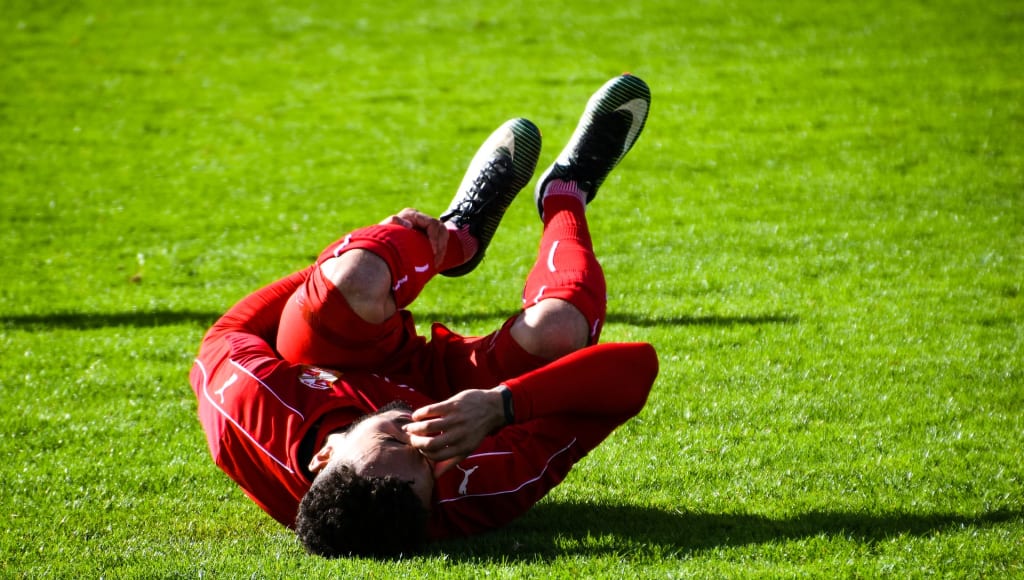Seriously, Do Your Physical Therapy Exercises
Laziness now will result in serious discomfort later.

When you get hurt and need to see a physical therapist, take it seriously. Seriously. I tore a ligament in my knee when I was 14 playing water polo, and was assigned to a physical therapist for months. Being an edgy teen, lying on my back for 15 minutes a day, and learning to re-bend my knee joint was just too much (insert melodramatic expression here). It’s been almost ten years, and my knee is still giving me trouble, as a result of my ignorance and laziness back then.
Physical therapy is critically important after any serious injury or accidents. Obviously the degree of your injuries can vary, from something like a torn ligament in high school sports to a serious personal injury like a car accident. Licensed physical therapists are found in a wide range of healthcare settings; anything from neurological centers, sports, nursing homes, accident recovery, hospitals, schools, hospice, occupational safety, government work, and more. Regardless of the cause, it’s likely your body will swell when you get hurt–it’s part of the physiological process. This swelling causes the muscles around the injured part of your body to stiffen and tighten, leading to decreased muscle activation. It can take a while to bounce back, possibly even months, or years, depending on the severity of your injury.
In the initial days or weeks after an injury, a physical therapist will probably work on restoring normal range of motion. At this point it’s easier to keep up with physical therapy, because you likely still have to go to the office a few times a week, and you feel inhibited by the lack of normal movement in your body. Things start to get dicey deeper into therapy, specifically with home exercises, or anything your therapist recommends you should be doing for a designated amount of time. Choosing to not finish out your exercises is equivalent to not finishing a prescribed course of antibiotics–you can build up resistance to the drug. When it comes to physical injury, your body may not heal properly, or completely. This could lead to repeated injury, or a different injury down the road. Some of the most significant benefits:
Avoid surgery.
In some serious injury cases, surgery might be an option for healing your injury. However if you follow a complete and dedicated course of physical therapy, surgery can be avoided in many cases. One of my friends tore a rotator cuff in his shoulder, and doctors recommended surgery. He committed himself to physical therapy for six months, and healed without going under the knife, ultimately maintaining more mobility in his shoulder.
Avoid opioids.
Prescription drugs are often prescribed for pain after an injury that would require therapy. We’re learning more about how addictive these medications can be, and for many people its best to avoid them. Opioids can have some serious side effects, including depression, overdose, and dependency. Opioids are becoming such a significant problem in the United States that now even the CDC is asking health care providers to encourage PT as an alternative for long-term pain management.
A physical therapist is meant to help you, but it’s really up to you to to take full responsibility for your healing. If you don’t commit to healing your body, you are the one that will bear the consequences for years of discomfort to come. 15 minutes of your day is worth keeping your body healthy. There are plenty of websites with ideas for exercises to do at home using regular items around the house. It’s worth it. No excuses.
I’ve been able to recover some mobility, and prevent further knee injuries by starting a yoga practice, but I ultimately wish I had stuck with it when my injury was fresh. Don’t be like me. Do your physical therapy exercises, seriously.
About the Creator
Ashlyn Lipori-Russie
Ashlyn is a graduate of the University of California, Berkeley with a background in Political Science and journalism. She is currently working as a consumer safety writer for safer-america.com.






Comments
There are no comments for this story
Be the first to respond and start the conversation.